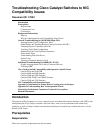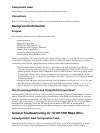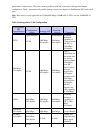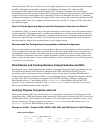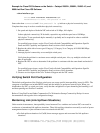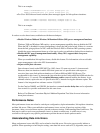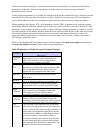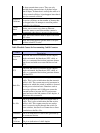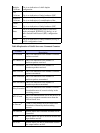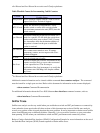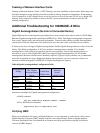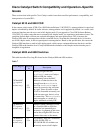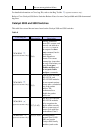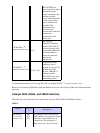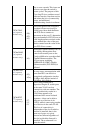Example for Cisco IOS Software on the Switch − Catalyst 2900XL, 3500XL, 2948G−L3, and
6000 that Run Cisco IOS Software
show interfaces type
Switch# show interfaces fastethernet 0/1
FastEthernet0/1 is down, line protocol is down
•
States other than connected and line protocol is up indicate a physical connectivity issue.
Complete these steps in order to troubleshoot physical connectivity:
Set speed and duplex of both the NIC and switch at 10 Mbps, full−duplex.
Is there physical connectivity? If desirable, repeat this step with the speed set to 100 Mbps,
full−duplex. To set speed and duplex manually is probably not be required in order to establish
physical connectivity.
For possible known issues, see the Cisco Catalyst Switch Compatibility and Operation−Specific
Issues and NIC Capability and Operation Issues sections of this document.
1.
Replace the cable with a known good Category 5, Category 5e or Category 6 10/100/1000 Mbps
Ethernet cable.
2.
Attempt physical connectivity across multiple switch ports.
Verify that the problem is consistent across multiple switch ports. Also, try multiple switches and
hubs if applicable.
3.
Replace the NIC in order to determine if the problem is consistent with the same brand and model of
NIC.
For possible known issues, see the Cisco Catalyst Switch Compatibility and Operation−Specific
Issues and NIC Capability and Operation Issues sections of this document.
4.
Create a service request with Cisco Technical Support and the NIC vendor.5.
Verifying Switch Port Configuration
The default configuration of the Catalyst switch ports can cause specific interoperability issues for NICs. The
symptoms of problems can include DHCP issues and the inability to perform a network login. When you
troubleshoot any NIC or switch port issue, verify that the configuration of port channeling and trunking is off
and that spanning tree PortFast is enabled.
Refer to Using PortFast and Other Commands to Fix Workstation Startup Connectivity Delays for more
documentation with regard to this configuration change.
Maintaining Link (Link Up/Down Situations)
Under certain circumstances, interoperability issues between Cisco switches and various NICs can result in
continuous or intermittent link up/down situations. These link up/down situations are usually a result of power
management features or jitter tolerance issues associated with the NIC.
For link up/down situations for CatOS, these messages appear and are normal for link up/down
situations:
PAGP−5−PORTTOSPT: Port [dec]/[dec] joined bridge port [dec]/[chars]
PAGP−5−PORTFROMSPT: Port [dec]/[dec] left bridge port [dec]/[chars]
•



